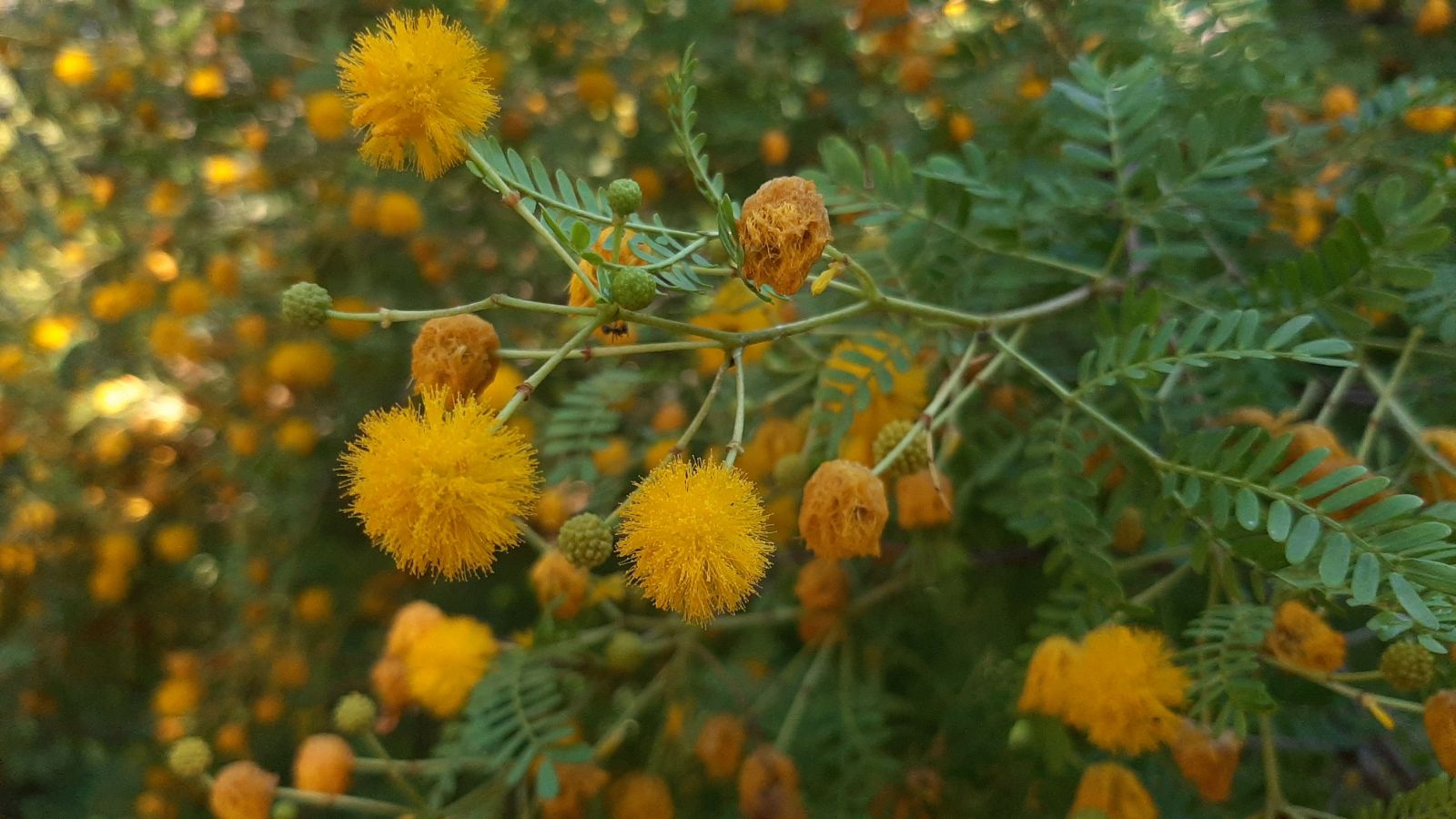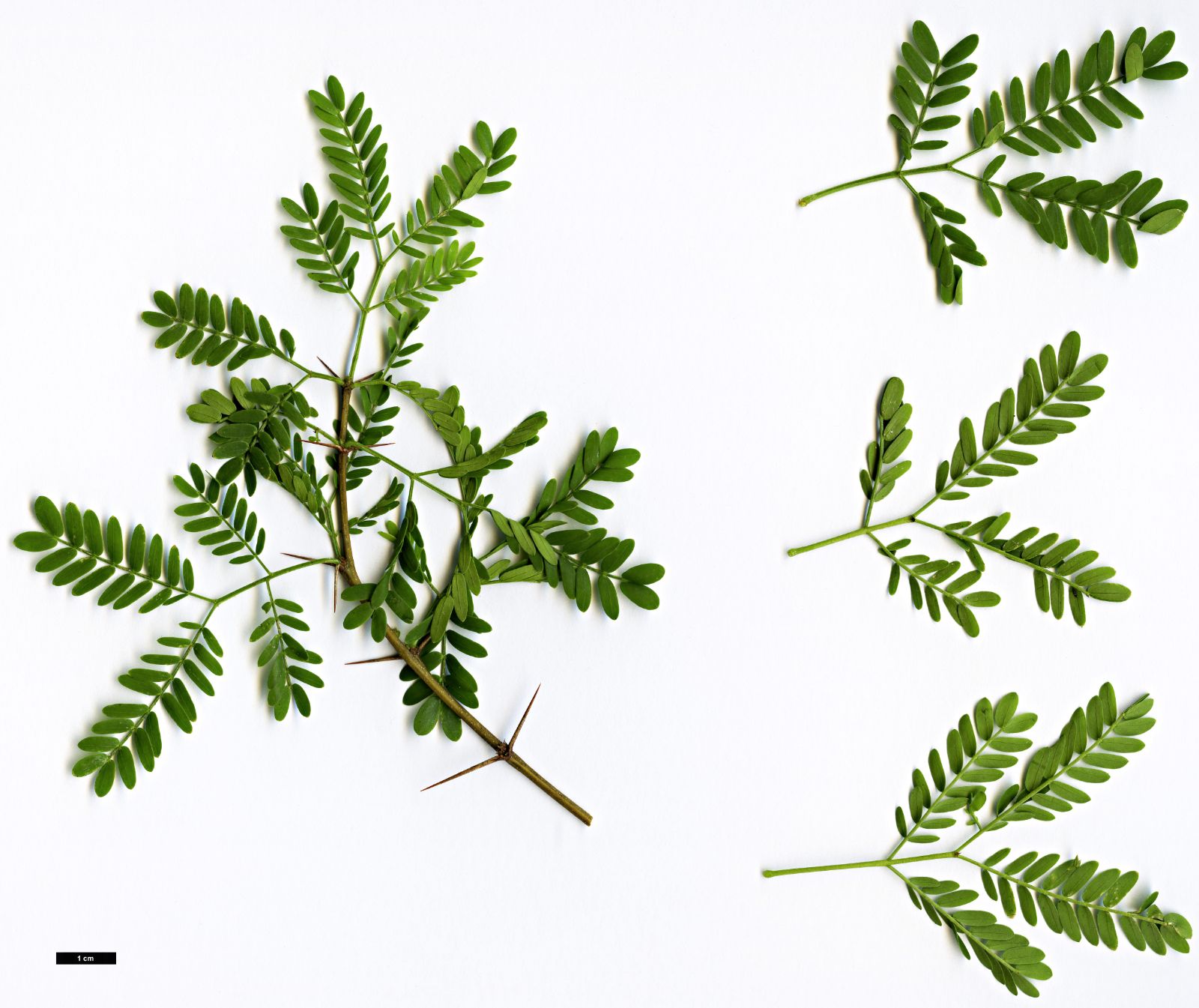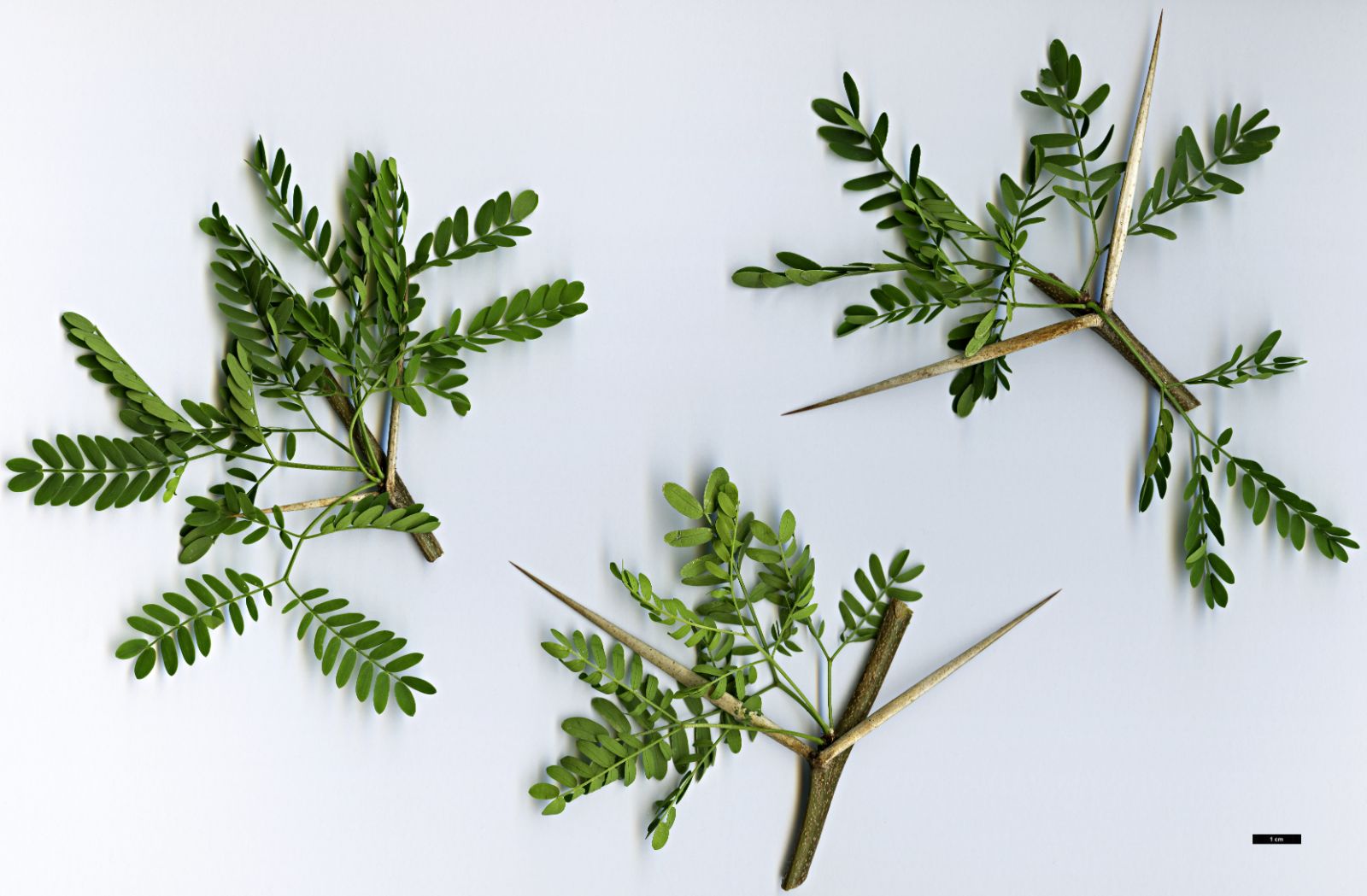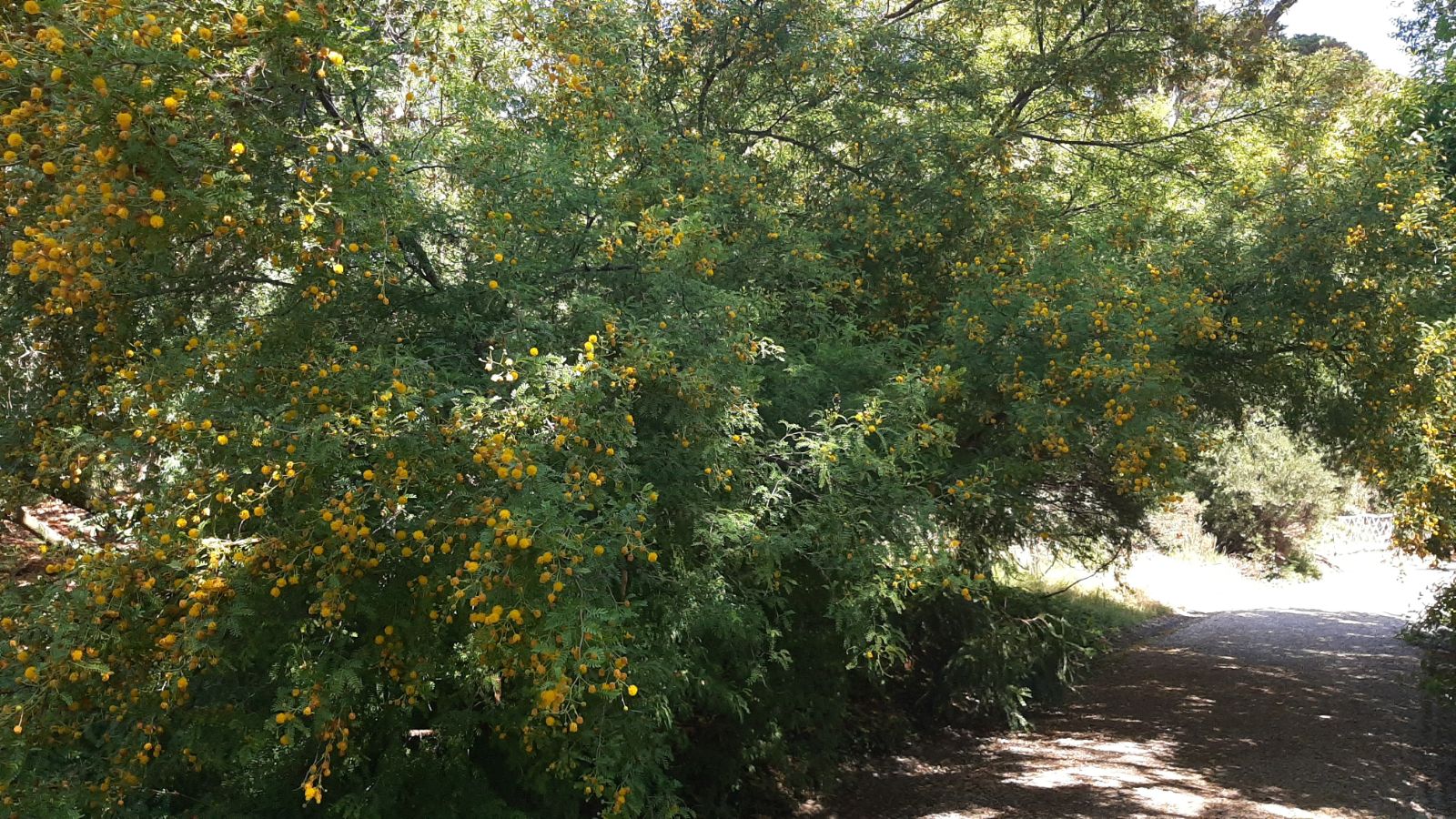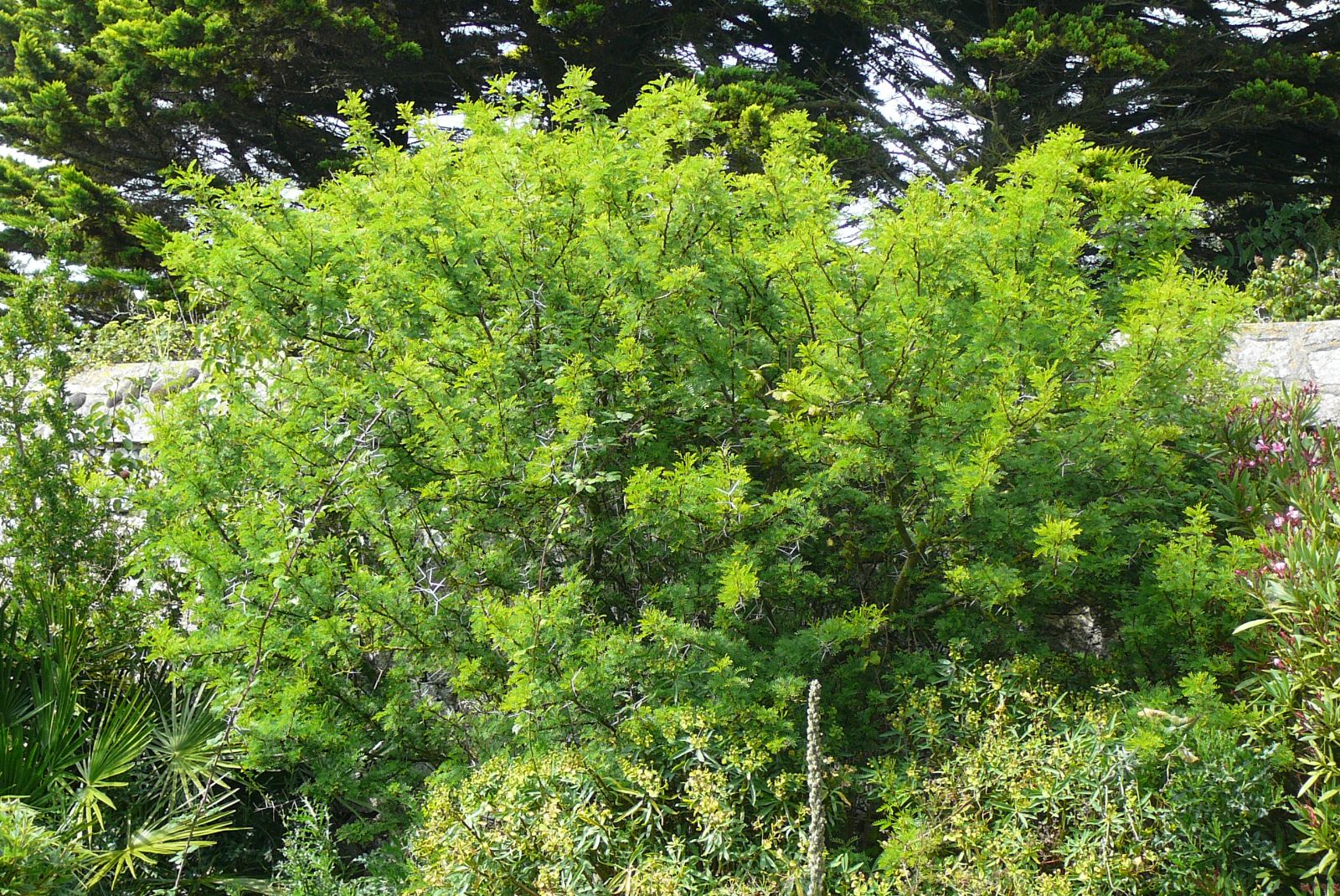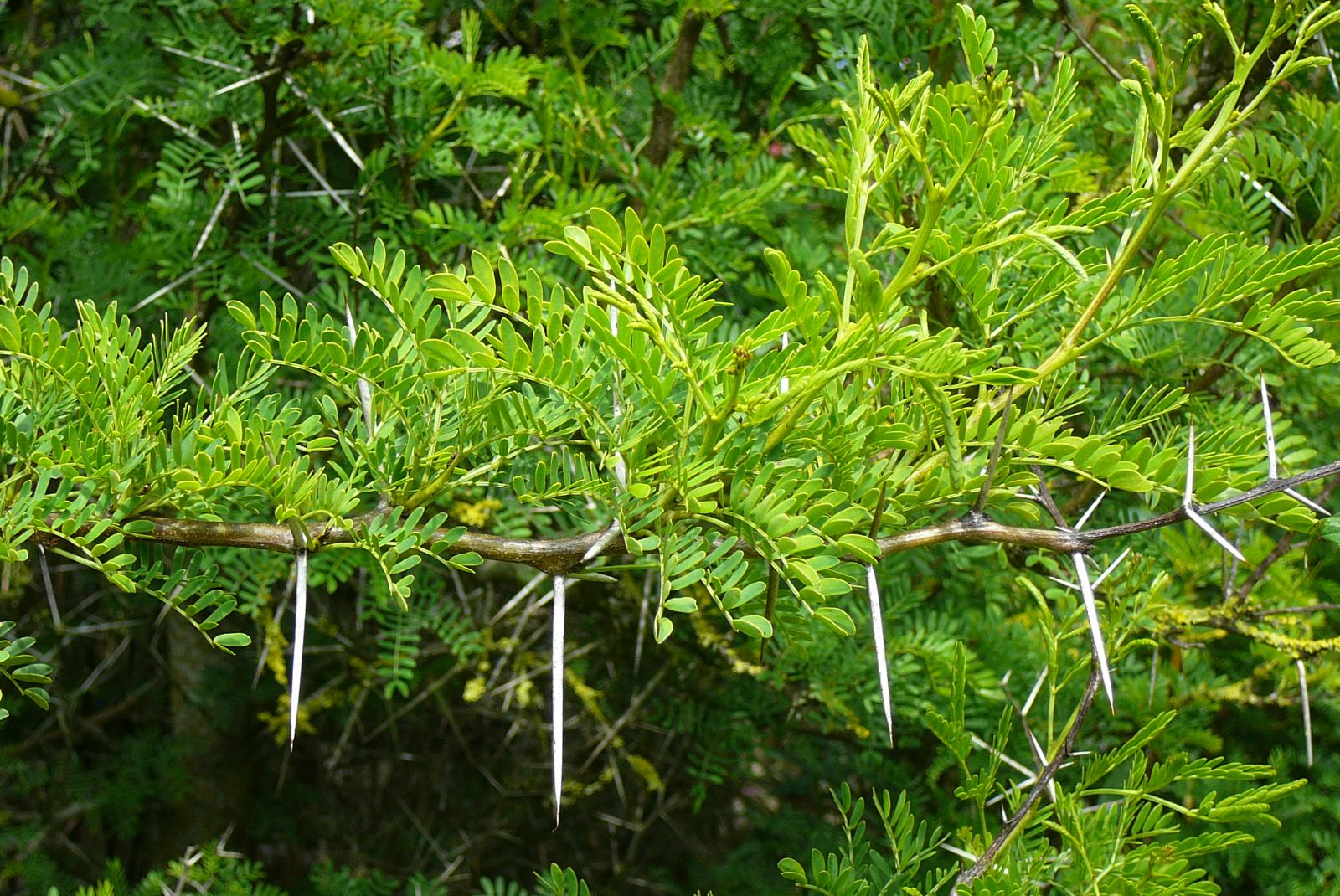Acacia karroo
Credits
Article from New Trees by John Grimshaw & Ross Bayton
Recommended citation
'Acacia karroo' from the website Trees and Shrubs Online (treesandshrubsonline.
Genus
Common Names
- Sweet Thorn
Synonyms
- A. natalitia E. Mey.
- Vachellia karroo (Hayne) Banfi & Galasso
Tree to 15 m. Bark rough, dark reddish brown to black. Branchlets glabrous, with inconspicuous reddish glands, epidermis peeling off to reveal rusty red underbark; stipular spines straight, stout, white with dark tips, to 7(–17) cm long; other prickles absent. Leaves bipinnate, small or large gland present at the junction of each pinnae-pair; pinnae (1–)2–7(–9) pairs; pinnules 5–15(–27) pairs, 0.4–0.7 × 0.1–0.3 cm, oblong, glabrous or with minutely ciliate margins, apex obtuse to subacute. Inflorescence heads globular, 0.8– 1.2 cm diameter, bright golden-yellow and fragrant; individual globes are borne in the axils of the current season’s growth; but are occasionally clustered along leafless stems, giving the appearance of a terminal raceme. Flowers densely packed, 5-merous, petals larger than sepals, stamens numerous. Legume dehiscent, linear, ± falcate, 6–16 × 0.6–1 cm, thinly woody, slightly constricted between seeds. Flowering October to February, fruits ripening from January onwards (South Africa). Brenan 1970, Coates Palgrave 1990. Distribution ANGOLA; BOTSWANA; LESOTHO; MALAWI; MOZAMBIQUE; NAMIBIA; SOUTH AFRICA; SWAZILAND; ZAMBIA; ZIMBABWE. Habitat Woodland, wooded grassland, coastal scrub between 0 and 1520 m asl. USDA Hardiness Zone 9–10. Conservation status Not evaluated. Illustration NT66.
One of the quintessential trees of the African savannas and veld, Acacia karroo is considered in South Africa to be an indicator of fertile conditions and good grazing, and the supplier of many useful products (Coates Palgrave 1990). In Australia, on the other hand, it is classed as a ‘noxious weed’ – just as many Australian wattles are in South Africa.
The occurrence of A. karroo on the South African Highveld exposes it in the wild to frost and this hardiness is persistent in at least some provenances. It is growing happily in front of the Curvilinear Range at Glasnevin, showing its characteristic reddish bark and gleaming white spines very well. It is available from several UK nurseries, but curiously no significant specimens have been traced in Britain in research for the current work. It is cultivated in California, and naturalised in southern Spain.



